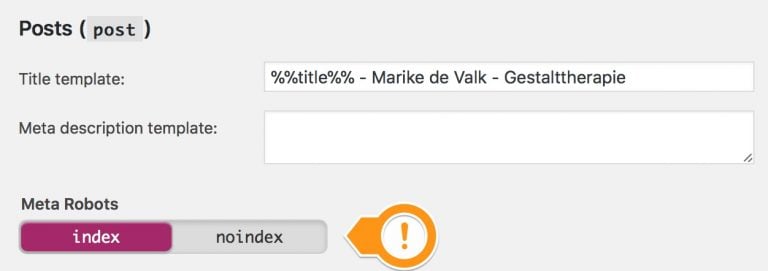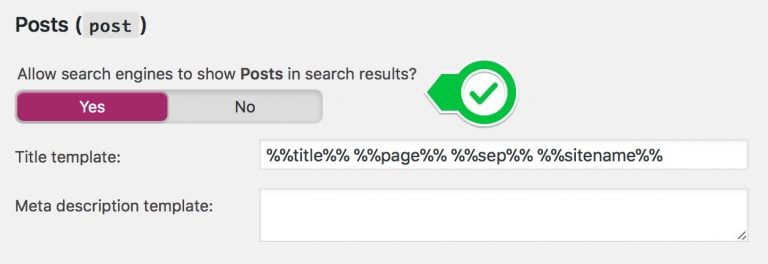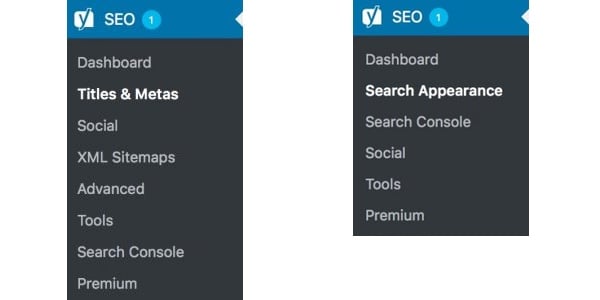Help us test Yoast SEO 7.0

Warning: DOMDocument::loadHTML(): Tag figure invalid in Entity, line: 42 in /home/staging-yoast/staging-platform.yoast.com/versions/8815de62a3cfa2d2c6585d675a0aa0bbac68b413/core-yoastcom/WordPress/Settings/TOC.php on line 66
Warning: DOMDocument::loadHTML(): Tag figcaption invalid in Entity, line: 42 in /home/staging-yoast/staging-platform.yoast.com/versions/8815de62a3cfa2d2c6585d675a0aa0bbac68b413/core-yoastcom/WordPress/Settings/TOC.php on line 66
Warning: DOMDocument::loadHTML(): Tag figure invalid in Entity, line: 50 in /home/staging-yoast/staging-platform.yoast.com/versions/8815de62a3cfa2d2c6585d675a0aa0bbac68b413/core-yoastcom/WordPress/Settings/TOC.php on line 66
Warning: DOMDocument::loadHTML(): Tag figcaption invalid in Entity, line: 50 in /home/staging-yoast/staging-platform.yoast.com/versions/8815de62a3cfa2d2c6585d675a0aa0bbac68b413/core-yoastcom/WordPress/Settings/TOC.php on line 66
Warning: DOMDocument::loadHTML(): Tag figure invalid in Entity, line: 66 in /home/staging-yoast/staging-platform.yoast.com/versions/8815de62a3cfa2d2c6585d675a0aa0bbac68b413/core-yoastcom/WordPress/Settings/TOC.php on line 66
Warning: DOMDocument::loadHTML(): Tag figcaption invalid in Entity, line: 66 in /home/staging-yoast/staging-platform.yoast.com/versions/8815de62a3cfa2d2c6585d675a0aa0bbac68b413/core-yoastcom/WordPress/Settings/TOC.php on line 66
Warning: DOMDocument::loadHTML(): Tag figure invalid in Entity, line: 86 in /home/staging-yoast/staging-platform.yoast.com/versions/8815de62a3cfa2d2c6585d675a0aa0bbac68b413/core-yoastcom/WordPress/Settings/TOC.php on line 66
Warning: DOMDocument::loadHTML(): Tag figcaption invalid in Entity, line: 86 in /home/staging-yoast/staging-platform.yoast.com/versions/8815de62a3cfa2d2c6585d675a0aa0bbac68b413/core-yoastcom/WordPress/Settings/TOC.php on line 66
Warning: DOMDocument::loadHTML(): Tag figure invalid in Entity, line: 90 in /home/staging-yoast/staging-platform.yoast.com/versions/8815de62a3cfa2d2c6585d675a0aa0bbac68b413/core-yoastcom/WordPress/Settings/TOC.php on line 66
Warning: DOMDocument::loadHTML(): Tag figcaption invalid in Entity, line: 90 in /home/staging-yoast/staging-platform.yoast.com/versions/8815de62a3cfa2d2c6585d675a0aa0bbac68b413/core-yoastcom/WordPress/Settings/TOC.php on line 66
Warning: DOMDocument::loadHTML(): Tag figure invalid in Entity, line: 162 in /home/staging-yoast/staging-platform.yoast.com/versions/8815de62a3cfa2d2c6585d675a0aa0bbac68b413/core-yoastcom/WordPress/Settings/TOC.php on line 66
We have got something special for you, but before we release it for real, we need your help testing it: Yoast SEO 7.0. This is one of the biggest releases we have ever done, hence the jump from version 6.3 to 7.0. We’ve greatly simplified the interface, deprecated unused features and combined others into smarter features. By cleaning up our code, we have also drastically improved the performance of the plugin. Now, we need your help testing Yoast SEO 7.0 so we can fix every bug we can find before the final release two weeks from now.
- How to test Yoast SEO 7.0
- Whatâs changing in Yoast SEO 7.0?
- But why now?
- One more thing: a new icon
- When will Yoast SEO 7.0 be ready?
How to test Yoast SEO 7.0
You can test the latest beta for Yoast SEO 7.0 by downloading it and installing it in your WordPress backend. We would advise you to install it on a test install or staging environment. Installing it on a live site is at your own risk. As always, make a backup before playing with beta software.
Download Yoast SEO 7.0 beta here » (this beta is no longer available)
Please report any issues you find in our Yoast SEO GitHub repository. You can find more information about the process on the Contributing to Yoast SEO page. Together, we can make this an incredible release.
What’s changing in Yoast SEO 7.0?
There’s going to be a lot of changes in Yoast SEO 7.0, both visible and invisible. See the changelog for the full list of changes. Here, I’ll go over some of the most obvious changes within your favorite SEO plugin. It all started with a quest to simplify things…
We’re asking you simple questions
The configuration pages will be different, simpler, more user-focused.

Compare this old situation with the new one below:

The “Meta Robots” setting in the old version does exactly the same as the “Allow search engines” question in the new one but is understandable to people who have less experience with SEO.
A simpler menu
The menu looks drastically different too:

In the old situation, Yoast SEO had an XML sitemaps menu item. In it, you could exclude “post types” (like Posts and Pages) and “taxonomies” (Categories and Tags, for example) from appearing in the XML sitemap. The only reason you would want to exclude post types and taxonomies from the XML sitemap is when you don’t want them to appear in the search engines. So… If your answer to the question above was “No”, I don’t want <x> to appear in the search engines, we now also exclude them from the XML sitemap. This might seem like a simple change, but it took a large portion of our options away in one fell swoop.
You could also disable XML sitemaps entirely on this menu item. This is what we call a “feature toggle”. This toggle has been moved to the Features tab on the Dashboard.
Titles & Metas becomes Search Appearance
The Titles & Metas menu item has been renamed “Search Appearance”. There are a few more settings on this page now, but in a more logical arrangement:


General & Homepage have been combined. This tab also features the contents of the “Your Info” / “Company Info” tab we had on the Dashboard before. Media is new and is explained below. Breadcrumbs and RSS were moved here from the Advanced menu item, which is now completely gone.
Media (or: Attachment URLs)
When you upload an image or a video to WordPress, WordPress automatically creates an attachment URL for it, next to allowing you to link to the media item directly. This is much the same as a post URL, but it has no real SEO value. Most sites therefore never use these attachment URLs, but because WordPress sometimes links to them, they do start being indexed by search engines.
Yoast SEO long had a feature that allowed you to redirect attachment URLs for images to the post they were embedded in. This seems logical. But an image can be embedded in multiple posts, and as the Media part of WordPress gets better, this happens more often. At this point, where do you redirect an attachment URL to?
It also means that images that are not attached to a post could not be redirected. So we’ve changed that behavior: there’s now a toggle that will disable all attachment URLs. If you enable that (which will be the default for new sites), we redirect all attachment URLs to the media item itself. Clean, simple, much better SEO wise and much easier to understand.
Permalinks features
The Advanced menu item had three tabs: Breadcrumbs, Permalinks, and RSS. Breadcrumbs and RSS have been moved to Search Appearance; Permalinks is gone. There were two features there that we kept around:
- The feature that allows removing
/category/from category URLs. This is useful in some cases, so we’ve moved it to the Taxonomies menu under Search Appearance. - The feature that removed
?replytocomvariables from URLs. This is a core “feature” that makes it possible to reply to other people’s comments when JavaScript is disabled in your browser. Every comment gets its own link because of this feature, so if you have 100 comments, you get 100 extra links to a post, and search engines have to index every one of these links. This is stupid. So: our feature to remove those is now on by default and doesn’t have a set anymore. This falls in line with WordPress’s core philosophy: decisions, not options. There is a ticket open to change this behavior in WordPress core too.
Advanced features toggle
For a while, Yoast SEO had a toggle for advanced features. This felt like a good idea at the time, but instead of properly explaining features, we hid them. In Yoast SEO 7.0, we’ve improved all features that were hard to explain. Luckily there were only a few of those, and they were so old that I’ve had to delete code that I wrote myself ten years ago.
Under the hood
Under the hood, there have also been several performance optimizations. We’ve changed how we set and retrieve options. We’ve removed all functions that had been deprecated before 2017. This is old code that we no longer use but was kept around for backward compatibility. These changes lead to less memory usage and a faster plugin overall.
But why now?
Well, to be honest, I have to give credit to Yoast Academy for this one. I was recording screencasts of the backend and couldn’t stand some of the things I had to explain. So we decided to start fixing them. Our development team has worked very hard to keep up with all the ideas, and we’re very proud to show you what we’ve built.
One more thing: a new icon
Because 7.0 is a big thing, we thought we’d make it even bigger: Yoast SEO is getting a new icon. The traffic light we’ve used for so long has turned out not to be a good metaphor across all cultures. In fact, we’ve learned that traffic lights differ per country and green is sometimes on top, and sometimes on the bottom.

So, without further ado: this is the new icon for Yoast SEO:
Awesome, right?
When will Yoast SEO 7.0 be ready?
We’re planning to release the final version of Yoast SEO 7.0 on Tuesday, March 6th. Since this is such a big release, we’ve decided to extend the testing period by two weeks so we can get as many eyes as possible on this release before we push it to everyone. You can help us find and fix issues by installing the release candidate, as mentioned above and go on a bug hunting trip. Add any issue you find or feedback you have to GitHub.
Happy testing!
Read more: Why every website needs Yoast SEO »

Discussion (55)